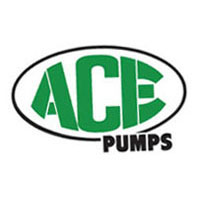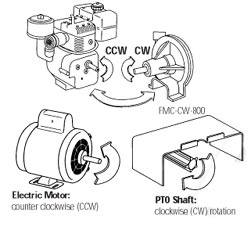Have you ever wondered how to quickly and accurately solve the problem of correctly sizing the horsepower for a pumping application? In this post we offer a short lesson in yet another technical application that our Sales Team deals with on a daily basis. We practice the principle of horsepower sizing almost every day at Dultmeier Sales.
In order to correctly size the horsepower for an application one must perform the following equation(s) in order to calculate. For positive displacement pumps we use the output pressure & flow rate required to determine the required horsepower. Centrifugal pump horsepower sizing is calculated using different methodology. We will elaborate on centrifugal pumps later in this post.
For positive displacement pumps, such as plunger, piston, diaphragm, or roller pumps we want to take the pressure (psi) x flow rate (gpm) divided by the constant for the particular type of pump, (which is based on the general efficiency of the pump type).
Determine the Type of Pump & Drive Option
For Piston and Plunger pumps, the constant factor is 1460. Roller pumps we use 1030. Lastly, Diaphragm pumps we use a factor of 1370. These constant factors are used for pumping water solutions - if we get heavier or more viscous solutions than water - our factors will need to be altered.
Centrifugal and Gear pumps can vary greatly and must be engineered to the specific application. That being said, we can look at some examples further down the line in this post.
We also need to consider the type of drive option that will be used. For instance, when using an electric motor versus a gas or diesel engine, there are varying drive constant factors, as well. More on this below in the post.
Horsepower Sizing Examples Explained
Example 1: Plunger pump rated flow is 4 gpm at 2000 psi. "EBH" or Electric Brake Horsepower required would be 4 x 2000 = 8000 divided by 1460 = 5.48. This equation shows us that we would require an electric motor with at least 5.48 horse power output to allow the pump to operate at peak performance. In this instance you would most likely need to use a 7-1/2 HP electric motor as most motor brands are generally 1HP, 1.5HP, 2HP, 3HP, 5HP, 7.5HP, 10HP, 15HP, 20HP, 25HP, etc.
It is important to note that electric motors have a rated horsepower and your specific application will have a required horsepower. Required specifies the horsepower needed to produce the desired output flow and pressure. While, rated horsepower defines the horsepower at which the motor is rated. For instance, if the application requires a 13 HP motor, one would need to select a motor that is rated for 15 HP (there is not an electric motor rated for 13 HP or 14 HP). Best practice is to select a motor that has a rated horsepower which exceeds your required application horsepower.
Example 2: Diaphragm pump rated flow is 12 gpm at 500 psi. The EBH would be calculated as such: 12 x 500 = 6000 divided by 1370 = 4.38 This would require an electric motor with at least 4.38 horsepower output to allow this pump to operate at peak performance.
Specialty Applications - Diesel Transfer Horse Power Sizing
For calculating gas or diesel engine horsepower requirements, a general rule is to take EBH required x 2.0. Example 1 above would require 5.48 EBH x 2. 0 = 10.96 engine horsepower requirement. Therefore you would need a gas or diesel engine that will develop at least 10.96 horsepower to allow the pump to operate at peak performance.
You can look at some diesel transfer units (centrifugal pump) that we have sized specifically for flow rates at the nozzle. We have multiple offerings that are designed to produce flow rates through a plumbing system. When calculating, we figure in the Total Dynamic Head of the plumbing system. In the case of our Diesel Transfer Skids, that means the pressure loss through the hose reel, 32ft of hose (inside diameter varies based upon specific unit) and a discharge nozzle. We use a self-priming centrifugal pump in these skid systems. When dealing with self-primer centrifugal pumps a safe efficiency factor to use is 50% efficiency.
When using gas or diesel engines to power pumps, depending on specific brands, "engine" horsepower requirements could be reduced slightly in some instances. For instance, some engines may have a higher compression or provide more torque as a result of enhance production practices. This is generally a smaller factor but something to consider when powering a pump with an engine.
Centrifugal Pump Horsepower Sizing
A major difference in sizing centrifugal pumps lies in the size, or trim, of the impeller. Based upon the solution, desired flow rates, and TDH in the plumbing system - we will size a pump to have a certain impeller trim and this directly correlates to the required horse power.
Generally speaking, we use pump curves to assist in sizing a centrifugal pump for a specific application. A pump will ALWAYS operate on it's curve. That's why it is vital to accurately determine our desired output flow rate, TDH, and solution being transferred. All of these factors, and actually many more like temperature and viscosity can, and will, affect the required horse power and impeller size of a centrifugal pump.
We have multiple tools at our disposal to assist with this process. One of them comes from a supplier of ours, Wilo. Dultmeier Sales' expertise paired with the expertise of Wilo helps us to provide a value-added service for our customers in pump/motor sizing for many applications.
Standard Efficient vs. Premium Efficient Electric Motors
Another important note to make is the difference between a standard efficient motor and a premium efficient motor. With the passing of Department of Energy regulations in January 2020 - many pumps (specifically straight centrifugal pumps) are now held to a certain degree of efficiency standards. The main goal being power consumption. Premium efficient motors are designed to be just that...much more efficient than a standard efficient motor.
Many pump manufacturers have since, or are in the process of switching, to premium efficient motors to assist in ensuring their pump products meet the mandated efficiency standards. Some manufacturers were able to re-engineer their pumps to meet the regulations - while others needed to redesign the pumps and upgrade to premium efficient motors.
Be aware, in some larger NEMA frame motors, the premium efficient option can boast a larger footprint. If your motor footprints do not match, this could cause an issue when you go to install the replacement motor. This is an important thing to consider when replacing standard efficient motors.
Service Factor in Electric Motors
Lastly, we want to consider the service factor in an electric motor of choice. A common service factor that many motor manufacturers use is 1.15. This means if your horsepower is rated to 20 HP then you actually have some leeway to go slightly beyond the rating - if necessary. 20 HP x 1.15 Service Factor = 23 HP. If our application had a required horsepower of 22.25 HP we could select this example motor with a service factor of 1.15.
While it's certainly not advised to select the example 20 HP motor in this instance - it could work. We would always caution on the side of error and advise the end user to select a rated 25 HP motor.
We certainly hope that this post provided useful content. As always, should you have any questions about pump sizing - don't hesitate to call us at 888-677-5054. Be good out there.















